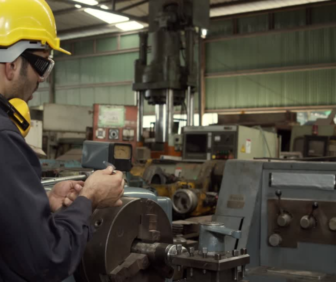Michigan’s per capita income in 2022 was 13 percent below the national average, the lowest compared to the nation ever. The state ranked 39th. (For those who prefer median household income as a measure of economic well being, Michigan ranks 37th.) Michigan is now structurally one of the nation’s poorest states.
This, of course, is the exact opposite of Michigan in the 20th Century when the state was structurally a high-prosperity state. In 1999 we ranked 16th in per capita income, just a smidge below the nation. In this post I want to focus on the reasons for Michigans decades-long economic well-being decline by comparing the components of Michigan per capita income in 1999 and 2022.
As readers of this blog know the core MFI description of the reason Michigan has been getting poorer compared to the nation is that we are over concentrated in manufacturing which is declining in both employment and wages and we are under concentrated in knowledge economy industries––information; finance and insurance; professional and business services; and corporate HQs––which are both growing and high wage.
And that is exactly what has happened between 1999 and 2022. U.S. per capita income in $2022 grew by $19,389. Michigan grew by $11,095. Knowledge economy industries share of per capita income in the U.S. has grown from 16.0 percent to 17.4 percent. In Michigan it has declined from 14.7 percent to 14.1 percent. Manufacturing share of per capita income in the U.S. has fallen from 10.9 percent to 6.1 percent. In Michigan it has declined from 18.9 percent to 10.3 percent.
Massachusetts, which is the economic well-being gold standard state, by comparison gets about 26 percent of its per capita income from knowledge economy industries and about 5 per cent from manufacturing.
Knowledge economy earnings (both wages and employer paid benefits) per capita in the U.S. went from $7,379 to $11,364. Manufacturing earnings went from $5,029 to $4,008. In Michigan, knowledge economy earnings went from $6,742 to $8,024; manufacturing earnings went from $8,689 to $5,888. A very big proportion of Michigan’s manufacturing earnings decline is in motor vehicles and motor vehicle body parts manufacturing where earnings declined by $2,026 out of a total decline in Michigan manufacturing earnings per capita of $2,801.
32.6 percent of Michigan’s decline compared to the nation is attributable to slower growth in knowledge economy earnings. Another 26.4 percent is attributable to our much steeper decline in motor vehicles, fabricated metals, and machinery manufacturing earnings. The two other big contributors to Michigan’s growing gap with the nation are slower growth in government earnings which explains 12.5 percent of the gap (so much for the Michigan is big government myth) and capital income which explains 18.6 percent of our decline.
Capital income, which is investment earnings not including capital gains, are almost certainly highly aligned with knowledge-economy employment and four-year degree attainment rates.
One item that does not explain our growing gap is transfer payments which grew in Michigan by $6,143 compared to $6,081 nationally.
For us the basic lesson of this data is what matters most to Michigan reversing its decades-long economic well-being decline is growing the knowledge economy. The knowledge economy is the high- wage and high-growth sector of the 21st Century American economy.
You can find our recommendations for how the state can best grow the knowledge economy here.







